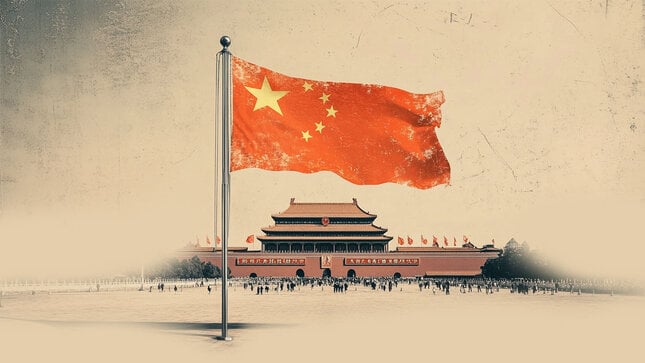- Mexican Peso declined after the Banxico decision to keep rates at 11.00%, hinting at possible future easing.
- Policymakers optimistic about ongoing disinflation, open to future rate adjustments.
- Despite positive Mexican economic indicators like lower unemployment and trade surplus, Peso stays weak.
The Mexican Peso extended its losses against the US Dollar after the Bank of Mexico (Banxico) monetary policy decision, in which the Mexican central bank held rates unchanged, though it opened the door for further easing. At the time of writing, the USD/MXN trades at 18.39, up by 0.38%.
Banxico’s Governing Board held rates at 11.00%, mentioning that domestic financial markets were volatile due to “idiosyncratic factors,” spurring a jump in Mexican bond yields and the Peso’s depreciation. Nevertheless, Banxico policymakers failed to say that traders’ reaction was sponsored by the ruling party majority in Congress, which would push for bills that could threaten the state of law.
Besides that, officials mentioned that the disinflation process is expected to continue, adding that “the board foresees that the inflationary environment may allow for discussing reference rate adjustments.”
Aside from this, Mexico’s economic docket fared better than foreseen, with the Unemployment Rate coming in below estimates, while the Balance of Trade printed a surprising surplus. Despite that, the Mexican currency remained slightly weaker against the US Dollar (USD).
Across the border, mixed data in the United States (US) boosted the Greenback against most emerging market currencies but dropped against most G7 currencies. The final reading of the Gross Domestic Product (GDP) for Q1 2024 was higher than expected, unemployment claims dipped, and Durable Goods Orders exceeded forecasts.
Daily digest market movers: Mexican Peso stays weak post Banxico
- Data from Mexico, revealed the Unemployment Rate in May was 2.6%, below estimates of 2.7%. The Balance of Trade printed a surplus of $1.99 billion, crushing the consensus projections for a $-2.04 billion deficit.
- Citibanamex survey showed economists priced out fewer rate cuts by the central bank, estimating rates will be lowered to 10.25% in 2024, up from 10.00%. Regarding the USD/MXN, the consensus year-end exchange rate estimate is 18.70, up from 18.00 in the previous report.
- Regarding economic growth, the consensus revised the Gross Domestic Product (GDP) for 2024 downward from 2.2% to 2.1% YoY.
- US GDP for Q1 2024 came at 1.4% higher than the 1.3% in the previous two readings, still trailing last year’s fourth quarter of a 3.4% expansion.
- US Durable Goods Orders in May rose by 0.1% MoM, exceeding forecasts for a -0.1% contraction. At the same time, Initial Jobless Claims dipped from 239K a week ago to 233K, beneath forecasts of 236K.
- CME FedWatch Tool shows odds for a 25-basis-point Fed rate cut at 59.5% up from Wednesday’s 56.3%.
Technical analysis: Mexican Peso slides slightly as USD/MXN rallies back above 18.30
The USD/MXN is upwardly biased, yet the pair would likely remain volatile as Banxico’s decision looms. Despite that, momentum is in favor of buyers as the Relative Strength Index (RSI) suggests that bulls are in control.
For a bullish continuation, buyers need to push the USD/MXN exchange rate past the psychological 18.50 level. Once cleared, the next stop would be the year-to-date (YTD) high of 18.99, followed by the March 20, 2023, high of 19.23, followed by an uptick to 19.50.
On the flip side, if USD/MXN tumbles below the April 19 high turned support at 18.15, that will pave the way toward 18.00. Next key support level would be the 50-day Simple Moving Average (SMA) at 17.37 before testing the 200-day SMA at 17.23. Once those two levels are cleared, the next stop would be the 100-day SMA at 17.06.
Mexican Peso FAQs
The Mexican Peso (MXN) is the most traded currency among its Latin American peers. Its value is broadly determined by the performance of the Mexican economy, the country’s central bank’s policy, the amount of foreign investment in the country and even the levels of remittances sent by Mexicans who live abroad, particularly in the United States. Geopolitical trends can also move MXN: for example, the process of nearshoring – or the decision by some firms to relocate manufacturing capacity and supply chains closer to their home countries – is also seen as a catalyst for the Mexican currency as the country is considered a key manufacturing hub in the American continent. Another catalyst for MXN is Oil prices as Mexico is a key exporter of the commodity.
The main objective of Mexico’s central bank, also known as Banxico, is to maintain inflation at low and stable levels (at or close to its target of 3%, the midpoint in a tolerance band of between 2% and 4%). To this end, the bank sets an appropriate level of interest rates. When inflation is too high, Banxico will attempt to tame it by raising interest rates, making it more expensive for households and businesses to borrow money, thus cooling demand and the overall economy. Higher interest rates are generally positive for the Mexican Peso (MXN) as they lead to higher yields, making the country a more attractive place for investors. On the contrary, lower interest rates tend to weaken MXN.
Macroeconomic data releases are key to assess the state of the economy and can have an impact on the Mexican Peso (MXN) valuation. A strong Mexican economy, based on high economic growth, low unemployment and high confidence is good for MXN. Not only does it attract more foreign investment but it may encourage the Bank of Mexico (Banxico) to increase interest rates, particularly if this strength comes together with elevated inflation. However, if economic data is weak, MXN is likely to depreciate.
As an emerging-market currency, the Mexican Peso (MXN) tends to strive during risk-on periods, or when investors perceive that broader market risks are low and thus are eager to engage with investments that carry a higher risk. Conversely, MXN tends to weaken at times of market turbulence or economic uncertainty as investors tend to sell higher-risk assets and flee to the more-stable safe havens.
Information on these pages contains forward-looking statements that involve risks and uncertainties. Markets and instruments profiled on this page are for informational purposes only and should not in any way come across as a recommendation to buy or sell in these assets. You should do your own thorough research before making any investment decisions. FXStreet does not in any way guarantee that this information is free from mistakes, errors, or material misstatements. It also does not guarantee that this information is of a timely nature. Investing in Open Markets involves a great deal of risk, including the loss of all or a portion of your investment, as well as emotional distress. All risks, losses and costs associated with investing, including total loss of principal, are your responsibility. The views and opinions expressed in this article are those of the authors and do not necessarily reflect the official policy or position of FXStreet nor its advertisers. The author will not be held responsible for information that is found at the end of links posted on this page.
If not otherwise explicitly mentioned in the body of the article, at the time of writing, the author has no position in any stock mentioned in this article and no business relationship with any company mentioned. The author has not received compensation for writing this article, other than from FXStreet.
FXStreet and the author do not provide personalized recommendations. The author makes no representations as to the accuracy, completeness, or suitability of this information. FXStreet and the author will not be liable for any errors, omissions or any losses, injuries or damages arising from this information and its display or use. Errors and omissions excepted.
The author and FXStreet are not registered investment advisors and nothing in this article is intended to be investment advice.
Recommended content
Editors’ Picks

EUR/USD struggles to find upside traction near 1.0950
EUR/USD remains below the 1.1000 barrier and trades with humble losses on the back of the acceptable rebound in the Greenback, as market participants continue to adjust to Trump's announcement of a 90-day pause on reciprocal tariffs on non-retaliating countries.

GBP/USD retakes 1.2800 and above
GBP/USD manages to keep the bullish bias despite the decent bounce in the US Dollar, navigating the area above 1.2800 the figure as investors continue to assess the ongoing US-China trade war. US doubles the bet, announced 125% levies on Chinese imports.

Gold remains bid, refocuses on $3,100
Prices of Gold now regain some balance and approach the $3,100 zone per troy ounce on Wednesday after President Trump announced a 90-day pause on reciprocal and 10% tariffs. FOMC Minutes pointed to further caution from officials.

Dow Jones Industrial Average rockets 6% higher on tariff suspension
The Dow Jones Industrial Average (DJIA) skyrocketed on Wednesday, surging over 6% on the day and returning to the 40,000 handle after the Trump administration announced yet another pivot on its own tariff policies.

Tariff rollercoaster continues as China slapped with 104% levies
The reaction in currencies has not been as predictable. The clear winners so far remain the safe-haven Japanese yen and Swiss franc, no surprises there, while the euro has also emerged as a quasi-safe-haven given its high liquid status.

The Best brokers to trade EUR/USD
SPONSORED Discover the top brokers for trading EUR/USD in 2025. Our list features brokers with competitive spreads, fast execution, and powerful platforms. Whether you're a beginner or an expert, find the right partner to navigate the dynamic Forex market.




